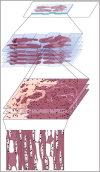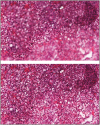Contemporary Whole Slide Imaging Devices and Their Applications within the Modern Pathology Department: A Selected Hardware Review
- PMID: 35070479
- PMCID: PMC8721869
- DOI: 10.4103/jpi.jpi_66_21
Contemporary Whole Slide Imaging Devices and Their Applications within the Modern Pathology Department: A Selected Hardware Review
Abstract
Digital pathology (DP) has disrupted the practice of traditional pathology, including applications in education, research, and clinical practice. Contemporary whole slide imaging (WSI) devices include technological advances that help address some of the challenges facing modern pathology, such as increasing workloads with fewer subspecialized pathologists, expanding integrated delivery networks with global reach, and greater customization when working up cases for precision medicine. This review focuses on integral hardware components of 43 market available and soon-to-be released digital WSI devices utilized throughout the world. Components such as objective lens type and magnification, scanning camera, illumination, and slide capacity were evaluated with respect to scan time, throughput, accuracy of scanning, and image quality. This analysis of assorted modern WSI devices offers essential, valuable information for successfully selecting and implementing a digital WSI solution for any given pathology practice.
Keywords: Digital pathology; hardware; microscopy; slide scanning; whole slide imaging; whole slide scanner.
Copyright: © 2021 Journal of Pathology Informatics.
Conflict of interest statement
There are no conflicts of interest.
Figures







References
-
- Browning L, Colling R, Rakha E, Rajpoot N, Rittscher J, James JA, et al. Digital pathology and artificial intelligence will be key to supporting clinical and academic cellular pathology through COVID-19 and future crises: The PathLAKE consortium perspective. J Clin Pathol. 2021;74:443–7. - PMC - PubMed
-
- Evans AJ, Depeiza N, Allen SG, Fraser K, Shirley S, Chetty R. Use of whole slide imaging (WSI) for distance teaching. J Clin Pathol. 2021;74:425–8. - PubMed
-
- Pallua JD, Brunner A, Zelger B, Schirmer M, Haybaeck J. The future of pathology is digital. Pathol Res Pract. 2020;216:153040. - PubMed
-
- Weinstein RS. Prospects for telepathology. Hum Pathol. 1986;17:433–4. - PubMed
Publication types
LinkOut - more resources
Full Text Sources

